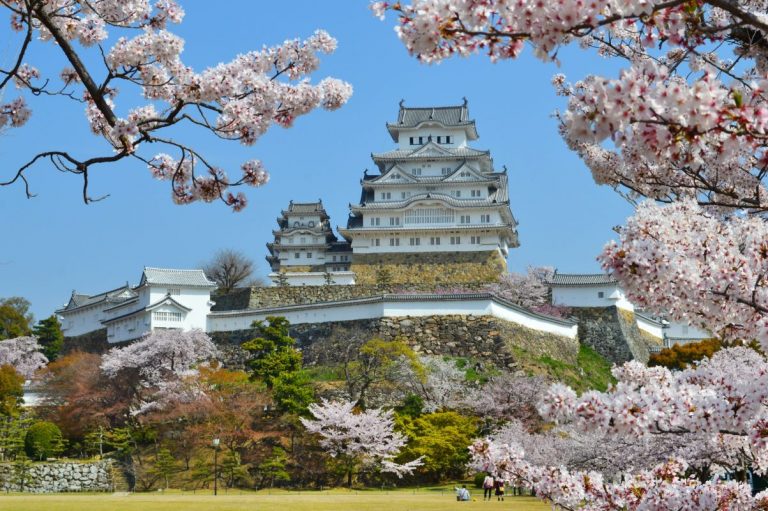Nijo-jo Castle in Kyoto has witnessed some of the most important events in Japanese history in the 400 years since its construction. It was completed in 1603 by order of Tokugawa Ieyasu, the founder and first Shogun of the Tokugawa Shogunate (1603-1867). Tokugawa Ieyasu unified Japan after a long period of civil war and ushered in a more than 260-year period of peace and prosperity. The government established by Ieyasu lasted fifteen generations, making it one of the longest periods of stability and prosperity in Japanese history.
The Castle served as the Kyoto residence of the Shogun on the rare occasions that he visited the Imperial Capital. When the Shogun was gone, Nijo Zaiban’s samurai guards, who were sent from the Shogun’s capital in Edo (present-day Tokyo), garrisoned in the castle.
In 1867, the 15th Shogun, Tokugawa Yoshinobu summoned the feudal lords of 40 domains living in Kyoto to the Ohiroma Palace of Ninomaru-goten and announced the end of the Tokugawa rule and the return of political control to the Emperor. This marked the beginning of the Meiji Period, during which Japan developed very rapidly evolving from a feudal society to the modern democratic nation we know today. Nijo-jo Castle hosted the opening and closing ceremonies of the last period of feudal rule, as well as being the starting point for the creation of the modern Japanese state.
In 1939, the palace was donated to the city of Kyoto and opened to the public in 1940. Today, it is one of the most important tourist spots in the city of Kyoto.
Some of its attractions are:
The Kara-mon Gate: located at the entrance of the Ninomaru-goten Palace. The architecture of the gate is used to indicate the highest status, indicated by the gable at the front and rear of the roof, and the use of cypress bark instead of copper or tile for the roof.
The Ninomaru-goten Palace: Consists of six connected buildings, arranged in a diagonal line from the southeast to the northwest. The Palace has 33 rooms and more than 800 tatami mats. It is decorated with paintings from the Kano School (replicas). Subjects include the Matsutaka-zu (pine and hawk), tigers and leopards, which emphasize the authority of the Shogun, as well as the cherry blossoms and other flowers that represent the four seasons.
Ninomaru Garden: It was redesigned by Kobori Enshu, the commissioner of works for the Imperial Visit of 1626. It is a classic garden in the Shoin-zukuri style, with a large Horai-jima island (symbolizing Paradise) flanked by a crane island and a turtle island, both metaphors for longevity.
The 400-year-old buildings of the Ninomaru-goten Palace, the Kara-mon Gate, and the Ninomaru Garden, are unique survivals of one of the golden ages of Japanese architecture and design from the early Edo period, known for their ornate architecture and magnificent interiors.
For people interested in the history of Japan, mainly in the Edo period, it is highly recommended to visit this castle while traveling through Kyoto.


